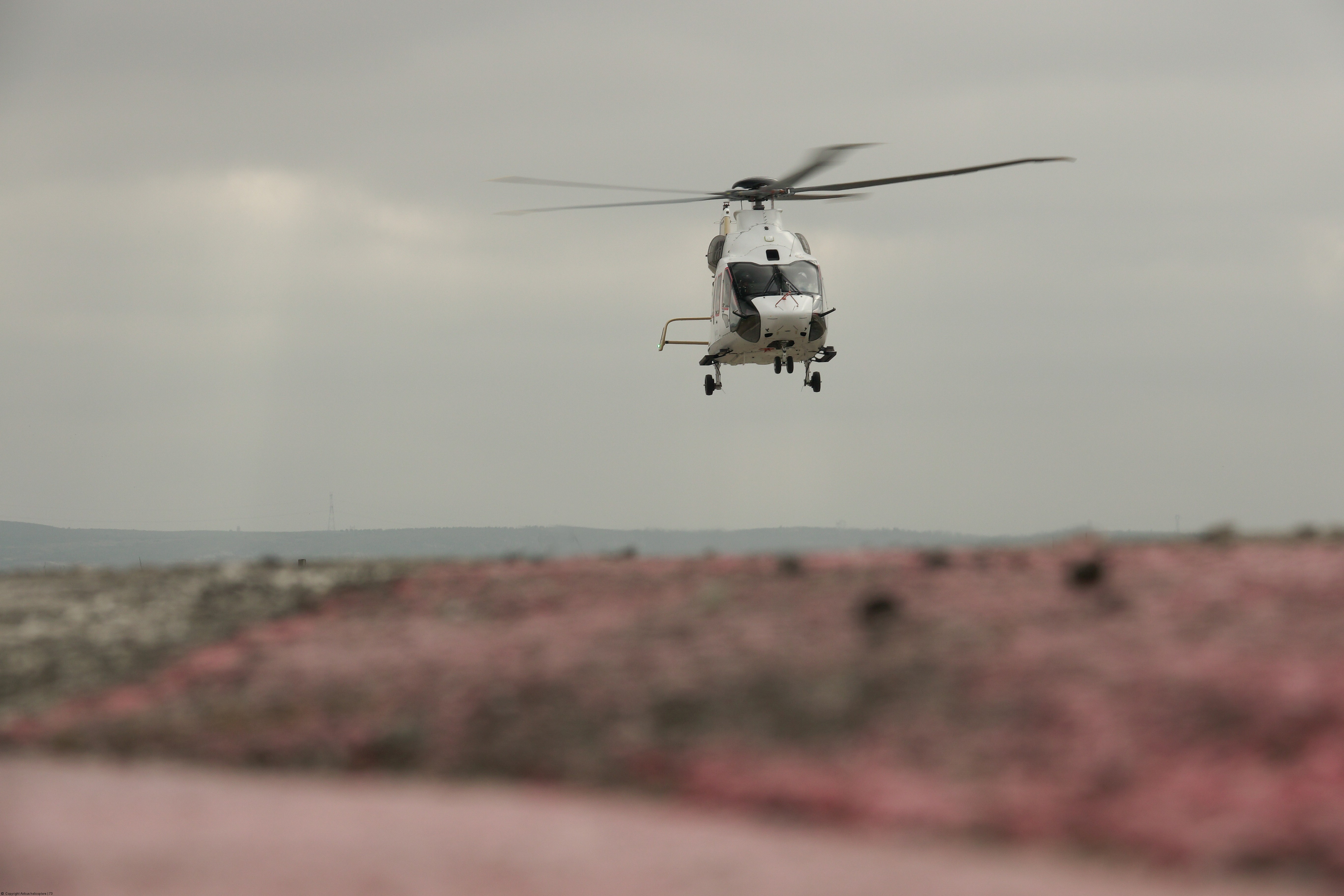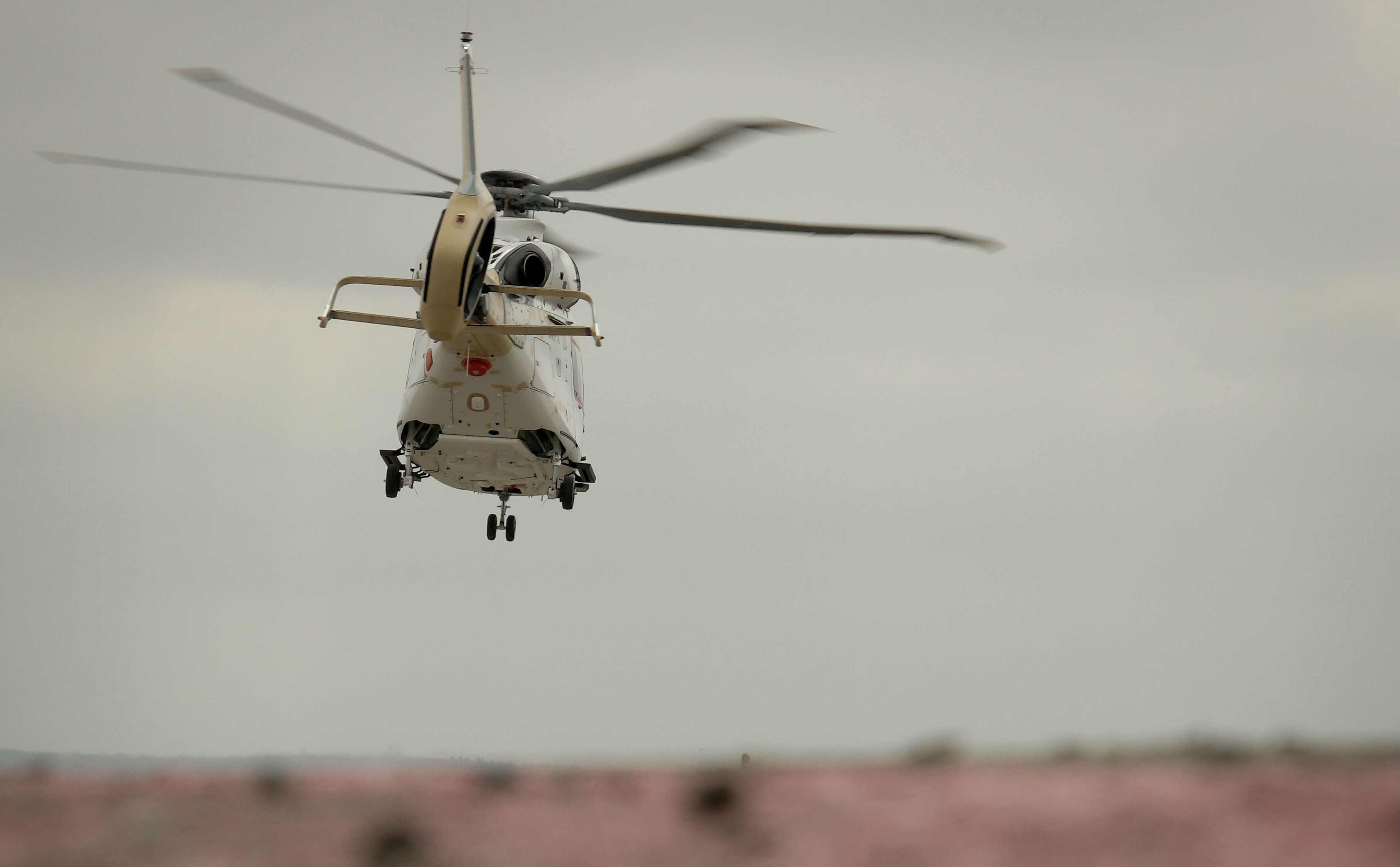Airbus Helicopters is confident of securing sufficient orders for its new H160 medium-twin to match an ambitious ramp-up target that will see it produce up to 45 aircraft a year by 2021, even as it works through the final 12 months of flight testing.
The airframer recently flew the programme's third prototype and says it is on course to hit certification and service entry with the new helicopter in the first half of 2019.
In parallel, the manufacturer is working to finalise the type's all-new production line and the industrial system underpinning it; a first serial aircraft will be inducted into the final assembly facility in December.
Describing the recent maiden sortie of aircraft PT3 – performed on 13 October – Bernard Fujarski, senior vice-president and head of H160 programme, says the 1h 40min flight was "quite an impressive flight for the first one".
"All in all the behaviour of the aircraft was very close to the predictions and simulations and very close to what we are experiencing with PT1 and PT2 for a while now," he says.
Its test pilots discovered no differences flying the latest prototype and its two predecessors, despite a number of modifications to the helicopter.
These, says Fujarski, related to the correction of "bugs" – such as moving the electrical and avionics equipment from the cargo bay into the nose to "minimise the centre of gravity travel" – as well as changes designed to save weight.
In all, the modifications, mostly to the airframe, have stripped out 40kg compared with the previous two flight-test articles.
Fujarski is confident that an additional 60kg can be saved, with the final, lighter configuration to debut on the first customer aircraft.
"It is not coming from one or two spectacular modifications, but a collection of a large number of changes and adjustments that are providing this saving.

Stephane Kervella/Airbus Helicopters
"The airframe, the [tail] boom, the skin – everything has been slightly modified from the definition of the first prototypes in order to save 100kg," he says. "It is common practice to first design a little bit too heavy and too strong."
Airbus Helicopters is also readying the H160's final assembly line to receive the initial aircraft. Under its new industrial model, what it calls major component assemblies – the front, centre and rear fuselage, as well as the rotors and dynamic components – are built, fully equipped, at its four European factories and then shipped to Marignane to be joined together.
In addition, the standard final assembly line is transformed into a five-station tact line, which, at full rate, will move forward every eight days: once up to speed it will take just 40 days to build each H160.
The validation of all these new processes is under way, but Fujarski is confident in the system's ability to ramp up quickly. Three or four helicopters will be produced next year, rising to "close to 20" in 2019.
"We expect to be able to produce and deliver up to 40-45 aircraft [per year] within three years," he says.
Of course, in order for it to need that rate, Airbus Helicopters must secure sufficient customers.
The airframer has already signed a "significant number" of letters of intent (LoI) for the H160, says Fujarski, as well as remitting a number of offers: "We are in final negotiations now with several customers," he says.
"We should be in a position to announce contract signatures by the end of the year.
"The number we have signed means we are no longer hunting for LoIs. The number we have signed is consistent with the industrial ramp-up," he says. "For us it does not make sense to commit to delivery dates now that will be five years after entry into service."
The forecast orders are "more or less" sufficient to support the planned output of 40-45 aircraft per year, he says.

Stephane Kervella/Airbus Helicopters
So far it has not been decided which version will be the lead variant, with that to be determined by the identity of the launch customer, but he says "we have an idea internally".
However, it will be a transport helicopter, Fujarski confirms, configured either for offshore or onshore work.
"It doesn’t make so much difference on the helicopter we have to produce. It will be something that is defined precisely in the coming months."
Two further models will follow shortly: an emergency medical services variant, built as green aircraft for outfitting elsewhere, and a VIP model, likely to be delivered in the 2020-2021 timeframe.
In the meantime, the manufacturer will continue its final push towards certification in the first part of 2019; "before the summer", says Fujarski, when pushed on the timeline, with service entry in the second half of that year. It hopes to have the majority of the documentation for European Aviation Safety Agency approval complete by the end of 2018, he says.
Of the remaining test points, the majority will be attained following flights in France, he says, with a smaller number potentially to be conducted overseas.
Meanwhile, Safran Helicopter Engines is due to gain certification for the its new Arrano turboshaft in September or October 2018, says Fujarski.
The initial application for the engine calls for take-off power of 1,200hp (900kW), but Safran recently advertised the growth potential of the turboshaft on the H160.
Fujarski emphasises that there is no immediate requirement for more power, but it will begin talks with the engine manufacturer about five years after service entry to define the likely future market demands.
However, the current focus is on "reaching certification and service entry according to the existing design of the engine and helicopter", he says.
Source: FlightGlobal.com



















